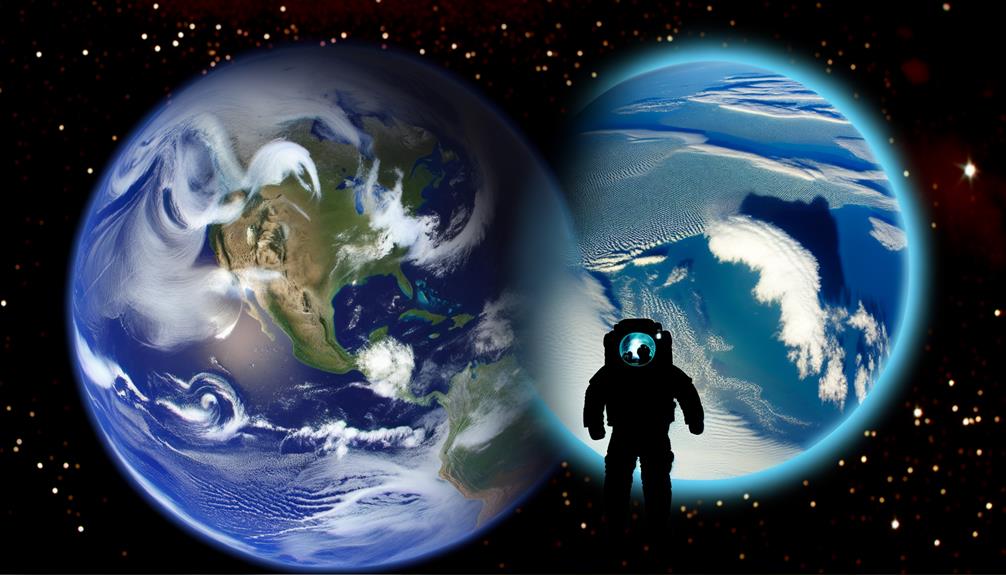Like a mariner navigating the vast sea of stars, you’re embarking on a journey of exploration, not outward into the cosmos, but inward to the heart of our home planet. This exploration will lead you through Earth’s complex ecosystems, its climatic diversity, and its geological wonders. You’ll also have to face the harsh realities of human impact and the challenge of preservation.
But, why should you care? Well, it’s more than just curiosity. As you’ll discover, understanding our planet is not only fascinating, it’s also essential for our survival.
So, are you ready to embark on this journey?
Unraveling Earth’s complex ecosystems
Let’s dive into the intricate web of Earth’s ecosystems, a vibrant tapestry of life that reveals the planet’s complexity and resilience. From the dense rainforests teeming with biodiversity to the desolate yet thriving desert landscapes, each ecosystem plays its unique role in maintaining Earth’s balance.
You’ll find that ecosystems, though varied in their characteristics, share common threads. They’re interconnected communities of plants, animals, and microorganisms, together with the non-living components like air, water, and soil. Each organism has its role, its niche, contributing to the overall health and function of the ecosystem.
Consider the coral reefs, the ‘rainforests of the sea’. They’re home to a quarter of all marine species, despite occupying less than one percent of the ocean floor. Their intricate structures provide shelter, breeding grounds, and hunting territories, making them critical to marine biodiversity.
Or take the grasslands, where herbivores graze on abundant vegetation, in turn becoming prey for predators, an intricate, dynamic balance of life and death. Each interaction, each connection, contributes to the ecosystem’s sustainability.
Climatic diversity: A global overview
As you journey around the world, you’ll encounter an astonishing array of climates, each shaping the distinctive landscapes and biodiversity of its region. You’ll feel the crisp, dry cold of the Arctic tundra, where hardy species withstand freezing temperatures. You’ll swelter in the relentless heat of the Sahara, where survival is a dance with the sun.
Swing by humid rainforests like the Amazon, where constant warmth and rainfall create the perfect cradle for a riot of life. Alternatively, you could visit the Mediterranean’s mild, wet winters and hot, dry summers, a climate that’s shaped civilizations for millennia.
Don’t forget the temperate deciduous forests, where you’ll experience four distinct seasons. Or the sweeping grasslands of the savannah, where seasonal rainfall dictates the rhythm of life. And of course, there’s the unique environment of the alpine regions, a world of snow and rock.
You’ll notice that each climate isn’t just about weather patterns alone. They’re intricate systems that influence the soil, flora, fauna, and even cultures. The world’s climatic diversity is a testament to the Earth’s remarkable adaptability, a rich tapestry woven over billions of years. It’s a reminder that our home is truly a planet of contrasts.
Geological wonders of our planet
Beyond the mesmerizing array of climates, your journey around our planet also unveils an awe-inspiring display of geological wonders. You’ll be spellbound by the majestic splendor of the Grand Canyon, carved over millions of years by the Colorado River. It’s a testament to the power of water in shaping our world.
You can’t miss the Great Barrier Reef, the world’s largest coral reef system. It’s not just a geological marvel, but a vibrant and vital ecosystem. Further, the awe-inspiring Mount Everest, standing tall as Earth’s highest peak, is another testament to the planet’s dynamic geological processes.
Venture to South America and you’ll find the Andes, the world’s longest continental mountain range. It’s a striking display of tectonic plate movements. Meanwhile, Africa’s Great Rift Valley, a breathtaking testament to continental drift, stretches over 6000 kilometers.
Now, how about a trip to the unique limestone formations of China’s Guilin or the peculiar hexagonal basalt columns of Ireland’s Giant’s Causeway? These wonders reveal Earth’s geological diversity. Each site is a chapter in our planet’s deep history, waiting for you to discover and marvel at its tales of formation, transformation, and evolution.
Exploring extreme environments
Now, you’re ready to brave the Earth’s extreme environments, where survival is a constant challenge and life adapts in fascinating ways. Imagine descending into the deepest ocean trenches, where sunlight doesn’t penetrate and pressure can crush a submarine like a soda can. Yet, life flourishes there in strange, alien forms.
Or think about scaling the highest mountains, where the air’s so thin you can’t draw a full breath and temperatures plunge to lethal lows.
Let’s trek across parched deserts, where the sun’s relentless heat and lack of water test the endurance of every living thing. It’s here that you’ll find creatures that have adapted to survive without water for months.
Or how about exploring frozen polar regions, where the sun disappears for half the year, and temperatures can drop below -50 degrees Celsius? Yet, the hardy inhabitants of these icy realms, from tiny microbes to massive polar bears, have found ways to thrive.
Human impact: The preservation challenge
Despite the toughness of Earth’s extreme environments, it’s your actions as a human that pose the greatest challenge to their preservation. Your day-to-day activities, from the food you eat to the waste you produce, all contribute to the environmental impact. Overfishing, deforestation, pollution, and climate change aren’t just buzzwords; they’re real and they’re happening right now.
You’re not powerless, though. You’ve got the capability to make a positive impact. Start by reducing your carbon footprint. It’s as easy as driving less, recycling more, and changing your diet. You can also support preservation efforts, whether it’s by donating to conservation organizations or volunteering your time.
But it’s not just about individual actions. You need to hold your leaders accountable. Demand sustainable policies and practices from your government and corporations. Rally for change, make your voice heard.
Conclusion
You’ve journeyed through Earth’s complex ecosystems, marveled at its climatic diversity, and explored its geological wonders. You’ve braved extreme environments and faced the tough reality of human impact.
Now, the challenge lies in preserving this beautiful home of ours. It’s time to step up, take action, and ensure our planet remains the stunning, diverse haven it’s for generations to come.
After all, there’s no place like home, especially when that home is planet Earth.







